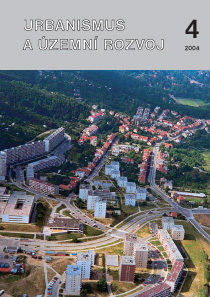
Nový Lískovec Today and Tomorrow: an interview with Mrs Jana Drápalová, Mayor of one of Brno's districts
The Mayor of Nový Lískovec, a district of the city of Brno, is a renowned activist of the Greens. Her district, comprising two neighbourhoods of late 20th century prefab apartment buildings, has been successfully involved in the national Programme of Housing Estates Refurbishment. What we also endeavoured to learn is how the environmentalist education and conviction may help carry out the tough job of a Mayor.
Scenarios for the Assessment of the Pseudo-Sustainable Development of Regions, by Josef Říha
This contribution is a continuation of the author's article published in 1/2000 UPSD where the concept of sustainable development was questioned in regard to strategic assessments of regional development plans. The ongoing dynamic development of environmental care reveals some inevitable facts: On one hand, the working tools of sustainable development, mainly the indicators, are being enhanced, the legislative standards and the corresponding methodologies are developed, and national strategic development concepts are emerging. On the other hand, the theoretic concept of sustainable development in its international framework has collapsed fatally. As a compensation for the failure of a scientific concept, political and normative measures are required. For the socio−economic and spatial development, the principle of anticipatory prudence is currently insisted upon. The phenomenon of increasing risks makes it necessary to add another main-stay to the three existing buttresses of sustainable development (environmental, economic, social), namely that of security.
Sustainable Refurbishment of Prefab Estates, by Karel Maier
The demographic development of the Czech prefab housing neighbourhoods in the 1990s was corresponding to, and sometimes even highlighting, the overall trends in cities and in the Czech population in general. Almost every pre−1990s housing estate witnessed a decrease in population. Most dramatic was the change in the age structure of inhabitants, people in newer estates „growing old“ much faster than those living in neighbourhoods built in the 1950s and 1960s. People of high income and the majority of social elites were leaving the estates in the nineties but the fear of downfall into ghettos has not come up to expectations, which is partly due to the unavailability of alternative housing for a large part of the middle class. The privatization of apartments, as still going on, caused an utterly unique mixture of ownerships, unknown elsewhere in Europe: identical buildings in the same prefab estate host apartment owners, co−op owners, renters under controlled or uncontrolled rent, and "subtenants" who pay untaxed money to their "landlords". Also, the article presents some of the outcome of the SUREURO project aimed at the quest for methods and procedures of sustainable refurbishment of collective housing.